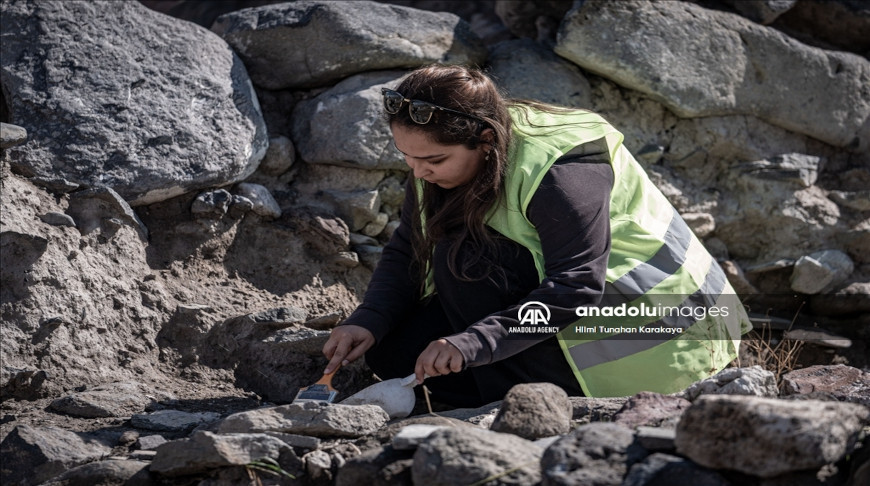
ERZURUM, 26 September (BelTA - Anadolu) - Traces and findings of settled
life from 7,000 years ago have been uncovered in the ongoing
excavations at Pulur Hoyuk in the Aziziye district of Türkiye’s eastern
Erzurum province.
Stone architectural remains, fixed hearths, grain silos, ovens, and ceramic workshops dating back 7,000 years have been brought to light during the excavation work, which began four years ago in the district.
"During the excavations at Pulur Hoyuk, we have identified traces of settled life dating back 7,000 years," Dr. Rabia Akarsu, the head of the excavation works, told Anadolu.
Akarsu said that they have been working with a team of 15 people, including scientists from various universities, as well as students and workers, since August.
"This year, we planned to start with the Middle Chalcolithic layer, which we identified last year,” said Akarsu.
"We are seeing that we have reached even earlier periods. We have now accessed the Early Chalcolithic layer," she said.
"We uncovered circular stone architectural remains and observed changes in ceramic materials. We also revealed hearth traces in different structures," Akarsu noted.
"In the excavations at Pulur Höyük, which have been ongoing for about 4 years, we have determined that there were signs of settled life here 7,000 years ago," she said.
Akarsu underlined that teams also uncovered two-meter long production ovens, workshops with walls made of mud blocks, and identified ceramic workshops.
"These findings clearly demonstrate that people did not just settle in Pulur Hoyuk occasionally, but lived here continuously," she added.
Stone architectural remains, fixed hearths, grain silos, ovens, and ceramic workshops dating back 7,000 years have been brought to light during the excavation work, which began four years ago in the district.
"During the excavations at Pulur Hoyuk, we have identified traces of settled life dating back 7,000 years," Dr. Rabia Akarsu, the head of the excavation works, told Anadolu.
Akarsu said that they have been working with a team of 15 people, including scientists from various universities, as well as students and workers, since August.
"This year, we planned to start with the Middle Chalcolithic layer, which we identified last year,” said Akarsu.
"We are seeing that we have reached even earlier periods. We have now accessed the Early Chalcolithic layer," she said.
"We uncovered circular stone architectural remains and observed changes in ceramic materials. We also revealed hearth traces in different structures," Akarsu noted.
"In the excavations at Pulur Höyük, which have been ongoing for about 4 years, we have determined that there were signs of settled life here 7,000 years ago," she said.
Akarsu underlined that teams also uncovered two-meter long production ovens, workshops with walls made of mud blocks, and identified ceramic workshops.
"These findings clearly demonstrate that people did not just settle in Pulur Hoyuk occasionally, but lived here continuously," she added.













